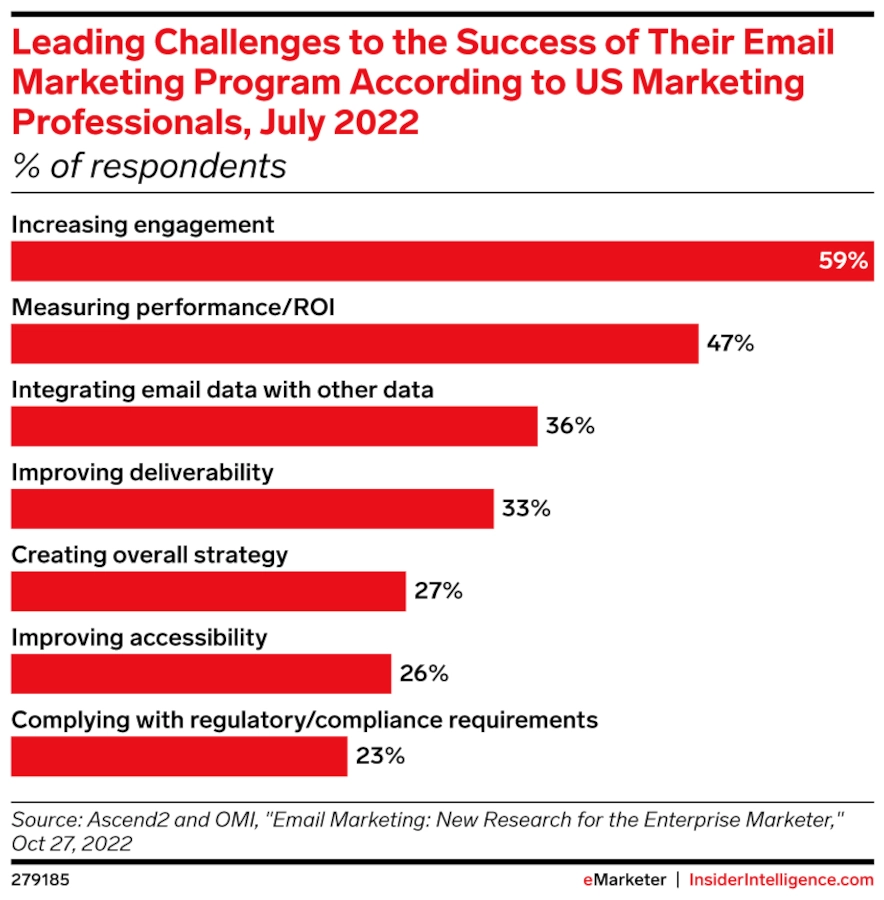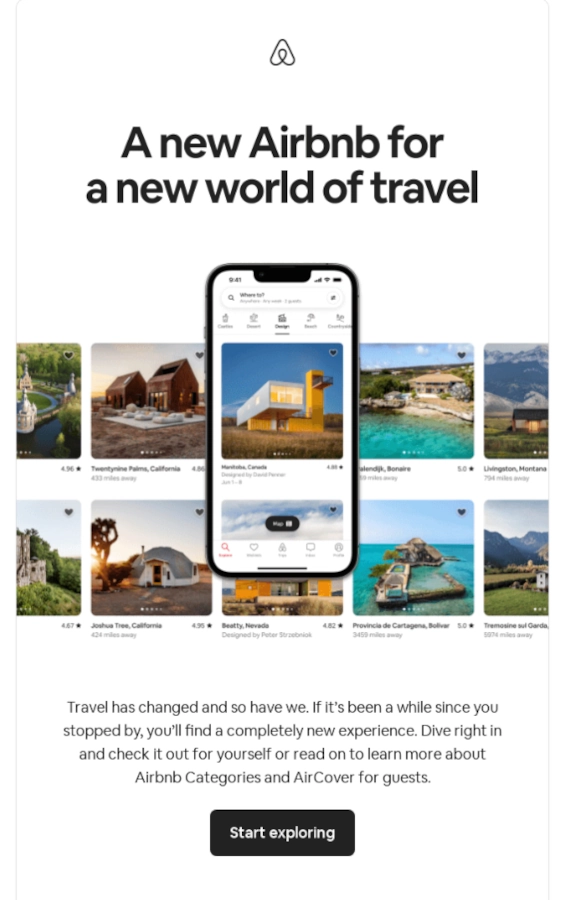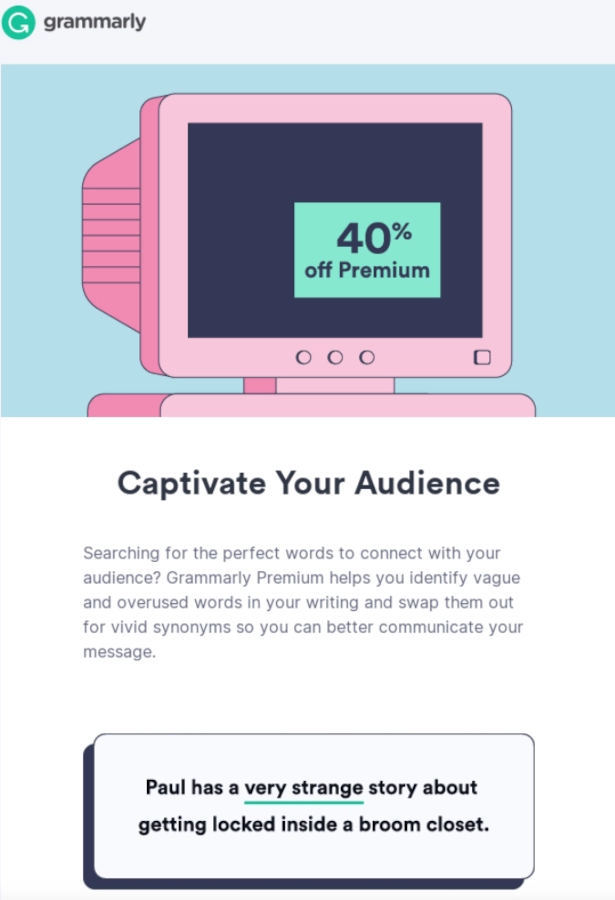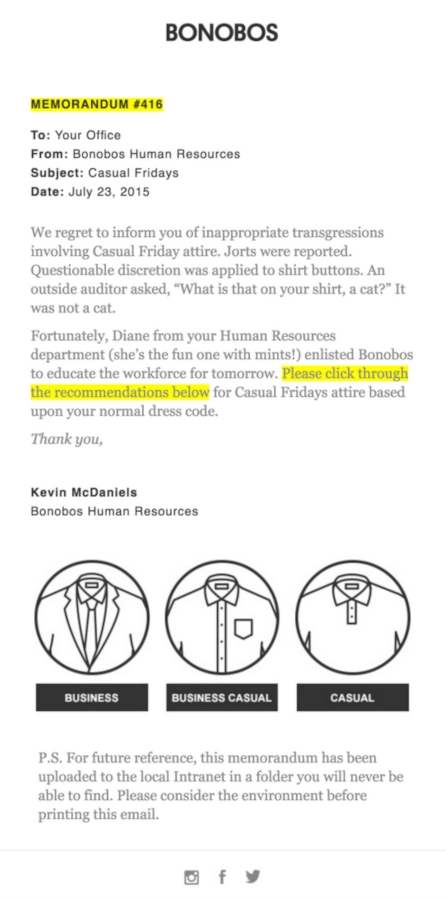Reading Time: 16 Minutes
We’ve come a long way since computer engineer Ray Tomlinson sent the first email in 1971. Half a century ago, email was a brand-new technology accessible to only a select group of scientists and researchers. Today, it’s a staple of our everyday lives and used by more than half the global population.
Oh, and it can (and should) be quite profitable, too.
Email marketing topped $9.5 billion in global revenue in 2022. Forecasters expect that number to grow to nearly $18 billion by 2027.
Due to its consistent returns and affordability, email marketing is perhaps the most obvious channel that every brand should use. Not only do emails reach thousands of subscribers at a low cost, but they can bring together various digital tools for a more interactive customer experience.
The key is staying on top of the latest trends and cultivating a strategy appropriate for your brand’s unique goals. So, let’s get into it.
The best way to measure the effectiveness of your email marketing strategy is to focus on engagement metrics that indicate how the emails perform. Open rates and click-through rates (CTRs) are popular indicators and shouldn’t be ignored. However, they don’t always tell the full story.
For example:

The impact email marketing can have on your business is undeniable. A recent survey conducted by AWeber revealed 79% of respondents say the strategy is “important” or “very important” to their overall marketing efforts. But email marketing doesn’t come without a unique set of challenges.

Image via eMarketer
Leading challenges to the Success of Their Email Marketing Program According to US Marketing Professionals, July 2022
% of respondents
Source: Ascend 2 and OMI, “Email Marketing: New Research for the Enterprise Marketer,” Oct 27, 2022
As important as email marketing is, only 60% of respondents in the same survey reported thinking their own strategies are “effective” or “very effective.”
So how can you overcome these challenges to run seamless email marketing campaigns? Let’s get into the list to find out.
Although your brand might have separate teams running the influencer and email marketing programs, the departments can maximize their efforts by integrating. With influencer and email marketing working hand-in-hand, you can create a more holistic strategy to engage your target audience and drive more conversions.
Here are a few ways influencer marketing can boost your email strategy:
Personalization means more than just adding the recipient’s first name to the subject line or body of the email. It’s a nice touch, but it only matters if they find the rest of the email helpful.
Instead, focus on serving your readers the most relevant content possible. That means segmenting your email list to help move them along the customer journey stages.
For example, send a welcome email to new prospects to set the tone for what they can expect from your mailing list and get more information on their interests. From there, you can set up nurture streams for prospects who have shown interest in a particular product to help educate them on the offering and move them closer to a purchase.
Other examples of personalized messaging include:
All of the common segmentation messages listed above can (and should) be automated whenever possible. Brands with small email lists might be able to get away with sending one-off messages to prospects. However, as your list grows, you’ll drive yourself crazy trying to keep everything organized without automating workflows and investing in the tools enabling you to do so.
Some other commonly automated email marketing workflows include:
Always be testing! But two or more variations of your email campaign to a select number of recipients on your mailing list and keep an eye on which performs better. Take the best approach and send it to the rest of the names on your list.
Most people read emails on their phones. According to Hubspot, 41% of email views come from mobile devices compared to 39% on desktop and 18% on tablets.
A few things to consider:
According to a recent study, about 82% of people use the “dark mode” setting on their phones. Try using darker colors for your texts and graphics to accommodate the setting’s increased usage. You’ll also want to test your emails in both “dark” and “light” modes to ensure everyone has an enjoyable user experience.
Think polls, quizzes, surveys, or anything that encourages recipients to take time to engage with your content.
For example, Spotify emailed users asking them to list their favorite songs to work out to. The results help the streaming service assemble “The Ultimate Pump-Up Playlist to Crush Your 2020 Workouts” while boosting brand engagement.
Including video content in your marketing emails creates a more engaging experience for your readers and helps you break down potentially complex ideas into a more digestible format. As a result, research shows that adding video to your emails can boost CTRs by 200-300%.
Some tips to consider:
Ensuring that your leads and customers get the same experience wherever they interact with your brand is critical. Start by meeting with decision-makers within the marketing team to nail down your brand voice and tone. From there, you can establish some messaging guidelines and perform regular content audits to make sure all your content is on brand.
Executing an effective email marketing campaign is hard work. It takes tons of planning and strategizing to maximize your efforts and get the results you’re looking for.
But your recipients don’t need to know that.
Keep your messaging clear, concise, and, you guessed it, simple. Your emails shouldn’t feel formulaic or over-produced. Ideally, your marketing emails should seem like you were thinking about your recipient and decided to shoot them something they might find helpful.
Sooner or later, you’ll need to invest in performance-tracking tools to measure the effectiveness of your campaigns and make data-driven decisions on how to optimize them in the future. When sifting through the data, keep an eye out for areas for improvement and iterate the strategies driving the highest ROI.

Image via Really Good Emails
Airbnb masterfully crafts personalized emails using customer data to segment its mailing list and provide relevant content. Some of the brand’s most successful emails include:

Image via Really Good Emails
Grammarly leverages email marketing to showcase how users can easily integrate the product into their daily workflow to improve their writing skills and drive engagement. Some popular Grammarly emails include:

Image via Really Good Emails
Bonobos uses striking product imagery and clear CTAs to promote its products and help share its brand story. Some of the brand’s popular emails include:
Email marketing tools can get pricey in a hurry. Fortunately, there are plenty of free versions of popular software to help get you started. Then, once you get your feet wet, you can determine how much you’re willing to spend and which solutions are best for you and your goals.
Here are a few options:
Mailchimp’s free version offers email templates you can customize to fit your brand voice and tone. There are also three paid software tiers you can upgrade to when you’re ready to unlock more functionality like A/B testing, segmentation, and more.
Constant Contact has a platform option for beginner, intermediate, and advanced email marketers. The company offers a free trial so you can give the software a shot before committing to monthly payments.
Brevo has a solid free option offering 300 emails per day, customizable email templates, a drag-and-drop editor, transactional emails, and SMS and WhatsApp Campaigns. It also offers paid versions for Starter, Business, and Enterprise brands.
Email marketing trends are always changing. As the digital ecosystem evolves, it’s critical to stay on top of the latest breakthroughs and consumer habits to ensure you’re giving your brand the best chance for success. That said, don’t be afraid to get out of your comfort zone and experiment with new techniques. It just might result in a breakthrough that puts you at the forefront of this often unpredictable landscape.
Our team keeps a finger on the pulse, so you’re always working with the latest information.